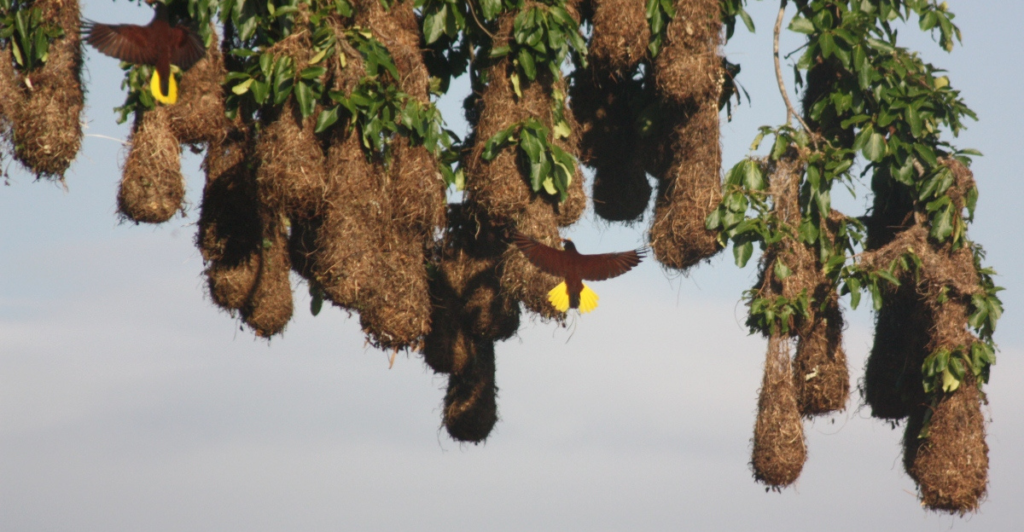
To construct the perfect nest, a select group of birds take it a step further, quite literally. These birds will not rest content with the norm of the typical cup-shaped nest mounted on perches. These are thrill-seeking engineers that insist on having their homes sway off tree trunks, across bodies of water, or sway in a pendulum-like fashion from the highest branches. Their solidly woven web designs are not only pleasing to the eye but engineering marvels defying reason and gravity.
Why, though, take such extreme measures? Why spend weeks or months collecting vines, grass, and spiderwebs to construct a tottering structure that may or may not hold? The reason lies in a mix of survival instincts and sheer creative brilliance. In this article, we’ll explore 10 extraordinary bird species that have mastered the art of aerial architecture, and reveal the surprising reasons behind their gravity-defying choices.
1. Montezuma Oropendola
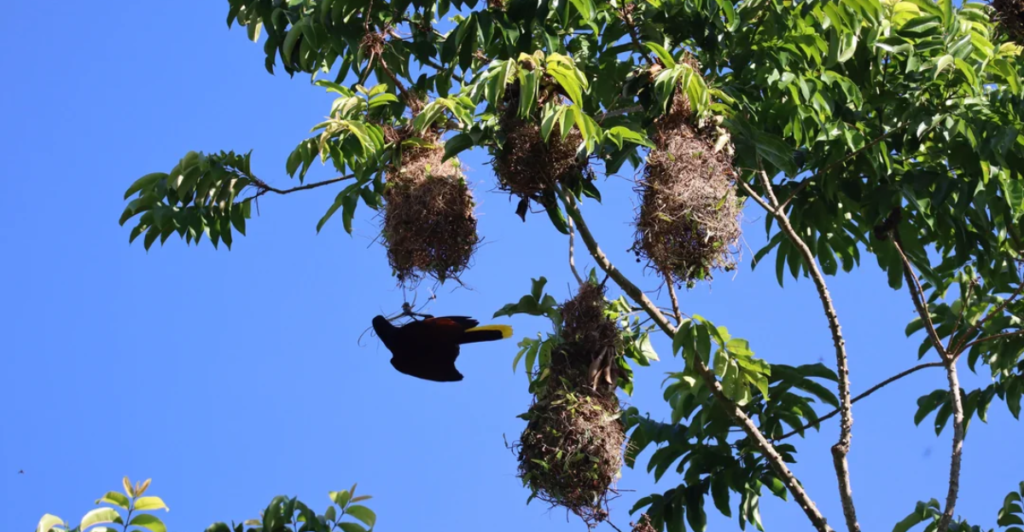
The Montezuma Oropendola is a master weaver, crafting long, pendulous nests that can stretch over three feet in length. Vine, plant fiber, and moss suspended nests hang in the shape of long bags between tall trees. They’re usually positioned in dense clusters of 100 nests per tree. They’re effective in protecting the Oropendola bird and its young against predators and strong winds.
Most of their nests are built by males who weave together vines and sticks into a hard framework into which they weave soft materials. The dense, firmly woven walls and deep pocket-like structure render these nests some of the most robust and most beautiful in avian architecture.
2. Baya Weaver
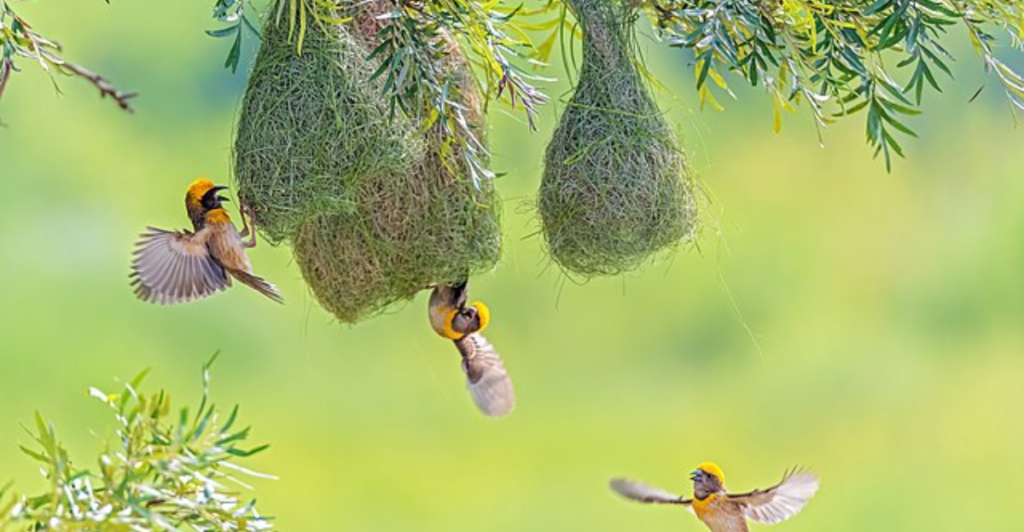
Few birds do architecture better than the Baya Weaver. Again, the males construct the intricate and complex nest with a very long tube-shaped entrance to drive away predators. They carefully bind and cross materials such as grass, palm fronds, and rice leaf blades to create a suspended piece of art.
Nester colonies may contain dozens of nests within a single tree, typically at the water’s edge, for additional protection. The males’ completed nest is an mandatory courtship display. Females select their partner based on nest quality. If she is content, they will mate, and the male will finish the last details before she lays her eggs.
3. American Bushtit
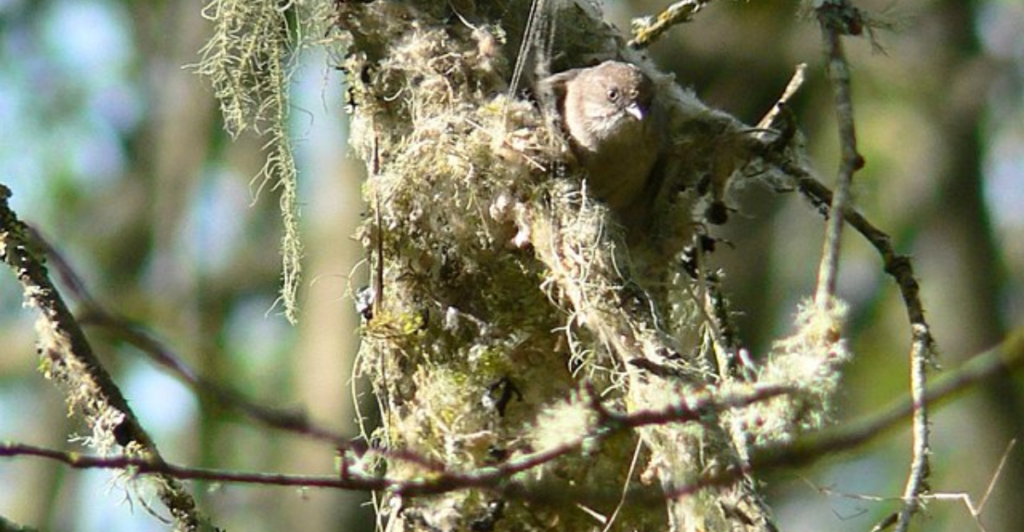
The nest of the American Bushtit is like a hanging sock: soft, pliable, and surprisingly tough. The small birds build their snug, insulating nests using spiderwebs, plants, moss, and lichens.
The sock-shaped structure gently wavers in the breeze, and its elasticity makes it pliable to unpredictable environmental conditions. Male and female bushtits labor together on the project, and they spend a month or more creating a single nest. The whole family, including helping birds, may huddle up together in the new nest, taking advantage of its heat and suppleness to keep warm on cold nights.
4. Warbling Vireo
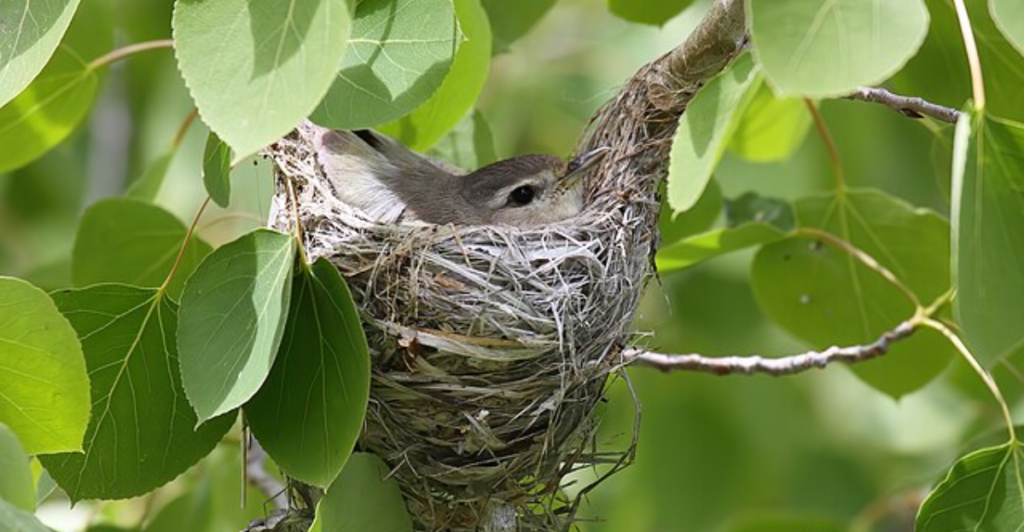
The Warbling Vireo builds a small, cup-shaped nest that hangs from a forked branch. Plant material, lichens, and spiderwebs comprise the thin but sturdy walls of the nest, which are held tightly in place to keep out wind and rain.
Typically found on the outside of the branches of deciduous trees, the nest is perfectly camouflaged with material surrounding it. The female vireo skillfully weaves and secures the materials together to create a secure and sturdy home to shield her eggs from the elements and potential predators.
5. Large-billed Gerygone
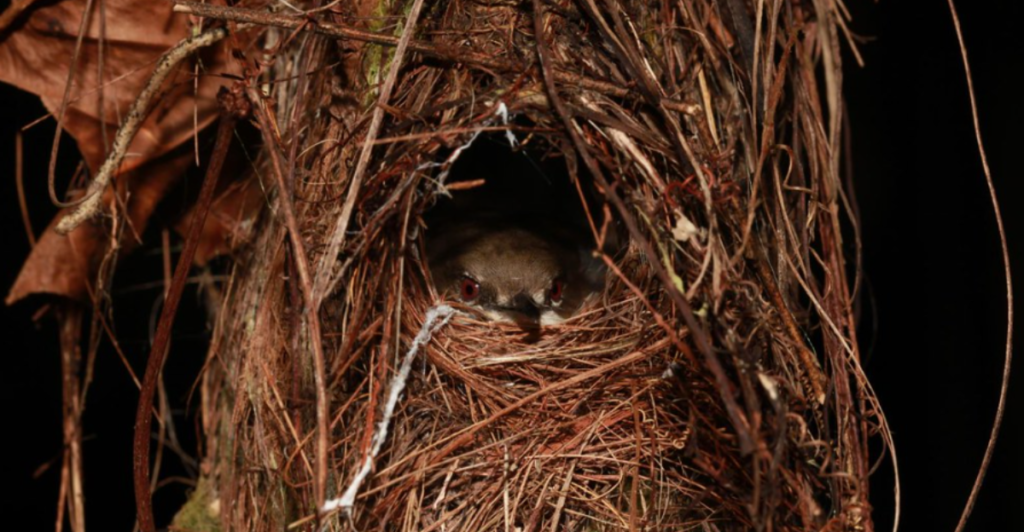
Large-billed Gerygone construct a domed suspended nest in a way that seems to be intentionally untidy. Constructing a nest using twigs, leaves, bark, and spiderwebs gives the appearance of natural trash more than a nest. The excellent camouflage is the primary tactic used to not attract predators.
Frequently constructed near water, the camouflage and adaptability of the nest make it a perfect option for windy coastal regions. In spite of their apparently random construction, they are surprisingly durable and resistant nests that shield large-billed Gerygone eggs.
6. Purple-rumped Sunbird
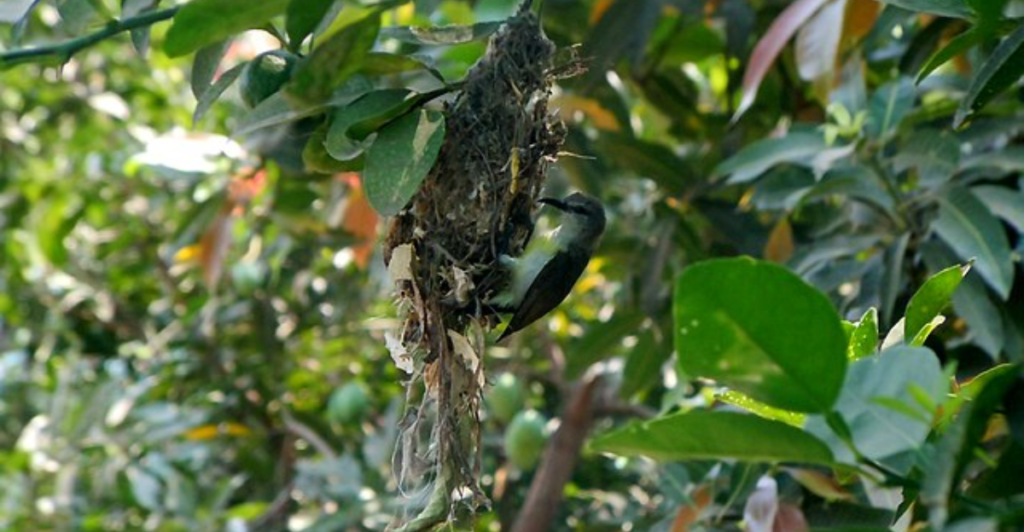
The Purple-rumped Sunbird builds a pendulous pouch nest, well made from cotton threads, spiderwebs, plant down, and twigs. A small porch normally adorns the entrance, forming a comfortable and safe lookout and nesting spot. The female does most of the constructing alone, using her hooked beak to gently wrap the material together.
The nest’s light but highly resilient build allows the nest to withstand harsh weather without being too visible among foliage.
7. Eurasian Penduline Tit
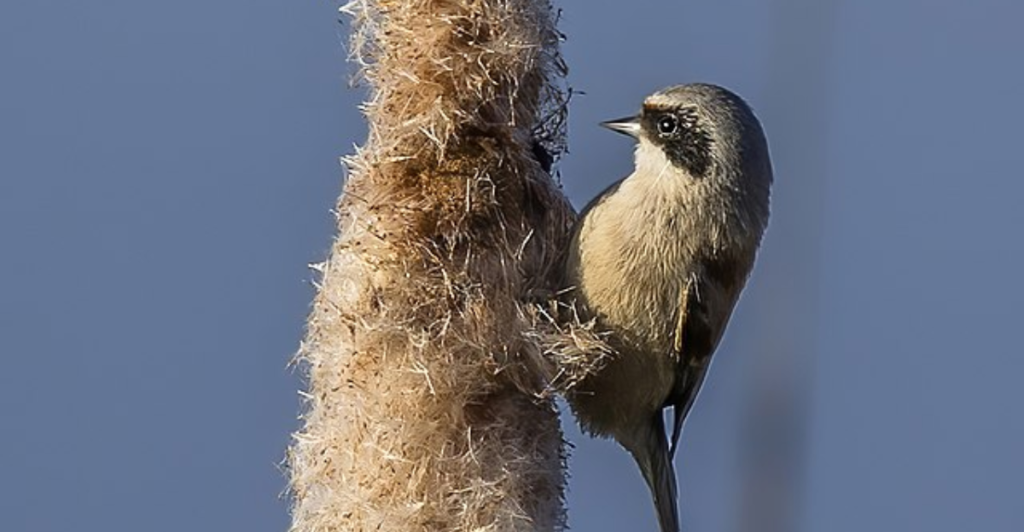
What makes it most recognizable is its soft, glove-shaped nest. The Eurasian Penduline Tit finds plant down and spiderwebs to create a sturdy and well-insulated sanctuary, methodically piecing it together. Its slender, tube-like entrance offers a further protective layer against outsiders.
Nesting is extremely competitive, with males demonstrating their building abilities in the hopes of attracting females. The end result is a cozy, suspended chamber that insulates the birds and their chicks from harsh weather and predators.
8. Streak-backed Oriole
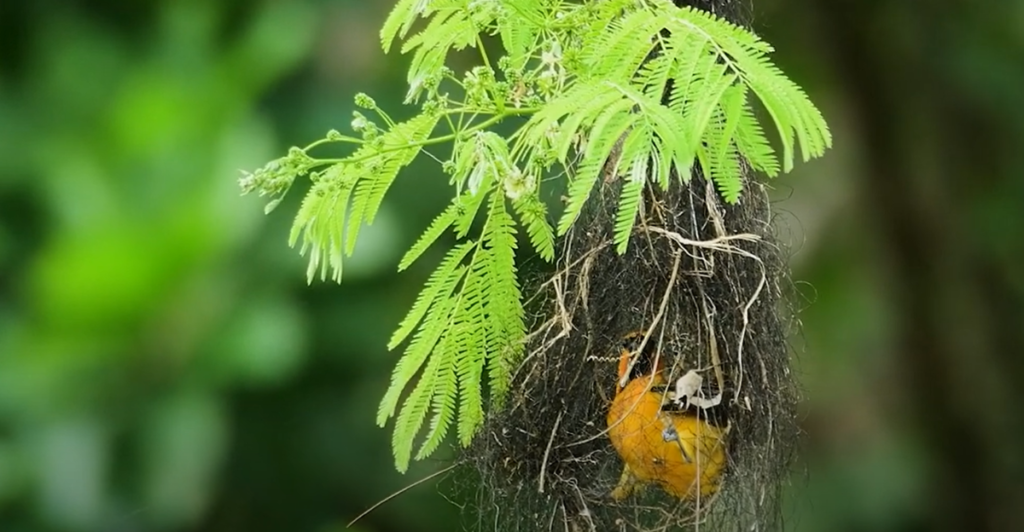
It builds teardrop-shaped nests with fungal strands and plant fibers known as rhizomorphs. These unusual materials have chemicals that repel insects like as ants. Females do a lot of weaving and build hard, flexible houses hanging from thorny twigs.
This defensive position not only protects against ground-dwelling predators but also shades and ventilates.
9. Striped Honeyeater
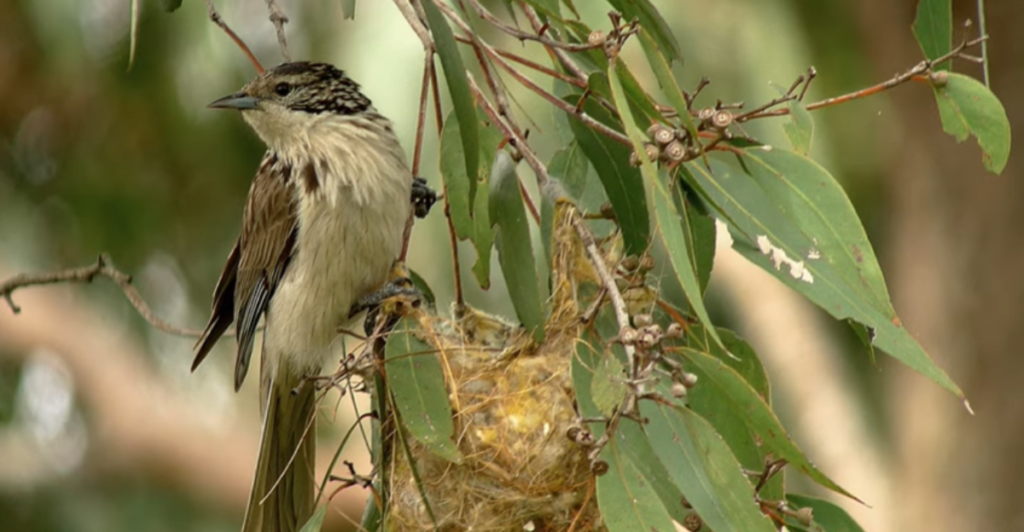
The nests of the Striped Honeyeater are made from dry grasses, feathers, rootlets, and even synthetic fibers when these are available. The nests are sturdy, well-insulated, deep, thick-walled, and are shaped like hanging baskets. Swaying over open woodlands on branches, the nests are concealed, making it more difficult for predators to locate them.
Their labor is a labor of love and a testament to the resourcefulness of this little but resolute bird. These incredible birds demonstrate that nest-making is not merely a survival tactic but an art. Each bird species here has mastered its own unique form of building a secure, solid, and functional abode, proof of the timeless creativity and versatility of nature.
Explore more of our trending stories and hit Follow to keep them coming to your feed!

Don’t miss out on more stories like this! Hit the Follow button at the top of this article to stay updated with the latest news. Share your thoughts in the comments—we’d love to hear from you!







